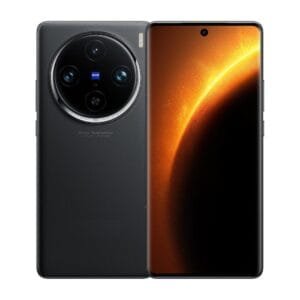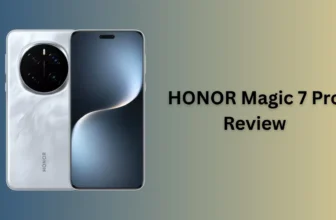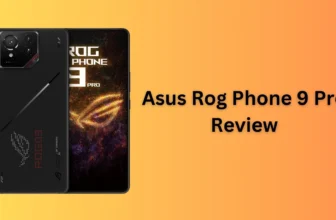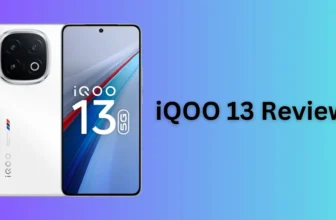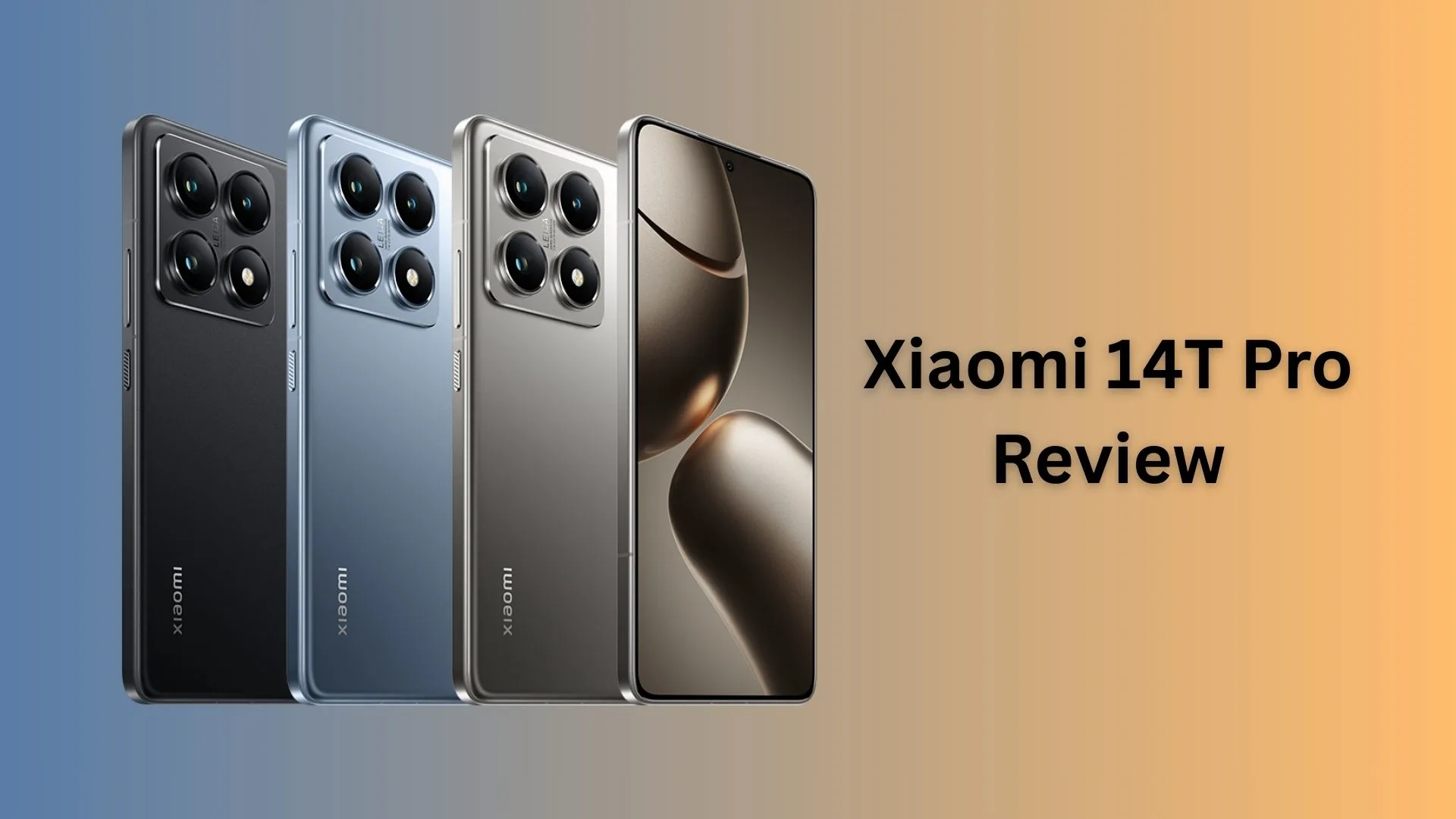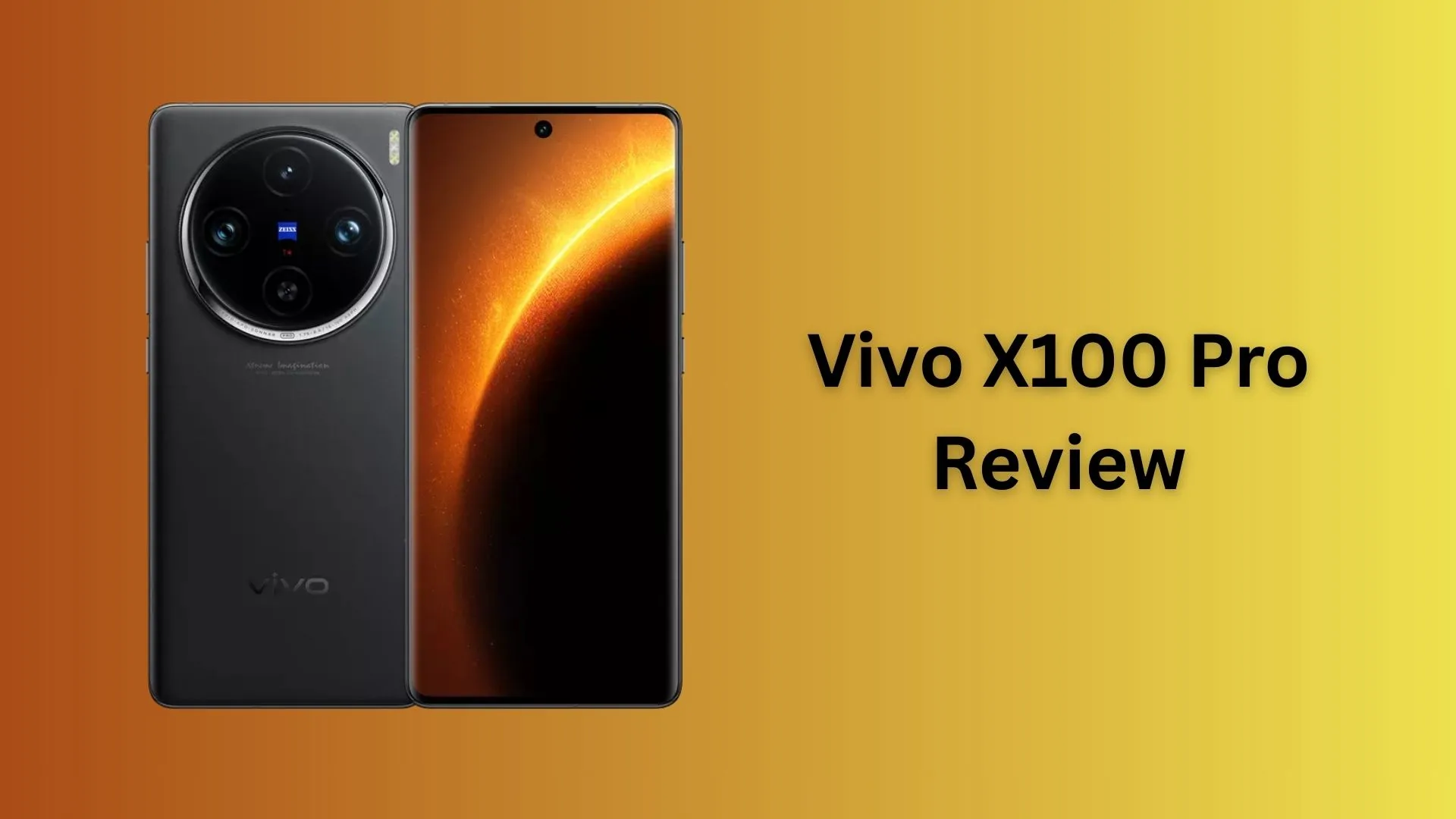
The Vivo X100 Pro has finally landed globally, boasting several meaningful upgrades from its predecessor. It’s the very first smartphone to debut with MediaTek’s new Dimensity 9300 chipset, and its photography suite includes a massive 1-inch main sensor, a sharper ultra-wide camera, a brand-new floating periscope telephoto lens, plus Vivo’s latest V3 image signal processor. You’ll also notice a brighter display, a beefier battery, and a striking new design. In the box, you’ll find:
- The X100 Pro handset
- A premium, rubberized protective case
- A 6 A USB-C charging cable
- A 120W fast-charger brick
Pricing and Availability
Vivo offers the X100 Pro in a single configuration worldwide: 16GB RAM paired with 512GB storage. At about $1,100 (approximately Rs. 92,000), it sits at a premium tier—yet competing flagships with similar specs and storage often cost even more.
Vivo X100 Pro
₹89,999.00- Display: 6.78″ AMOLED (1.5K)
- Chipset: MediaTek Dimensity 9300
- Memory: 16GB RAM, 1TB Storage
- OS: …
| GENERAL | ||||||||||||||||||||
|---|---|---|---|---|---|---|---|---|---|---|---|---|---|---|---|---|---|---|---|---|
| ||||||||||||||||||||
| BODY | ||||||||||||||||||||
| ||||||||||||||||||||
| DISPLAY | ||||||||||||||||||||
| ||||||||||||||||||||
| PERFORMANCE | ||||||||||||||||||||
| ||||||||||||||||||||
| MEMORY | ||||||||||||||||||||
| ||||||||||||||||||||
| SOFTWARE | ||||||||||||||||||||
| ||||||||||||||||||||
| REAR CAMERA | ||||||||||||||||||||
| ||||||||||||||||||||
| FRONT CAMERA | ||||||||||||||||||||
| ||||||||||||||||||||
| BATTERY | ||||||||||||||||||||
| ||||||||||||||||||||
| NETWORK | ||||||||||||||||||||
| ||||||||||||||||||||
| CONNECTIVITY | ||||||||||||||||||||
| ||||||||||||||||||||
| MULTIMEDIA | ||||||||||||||||||||
| ||||||||||||||||||||
| SENSORS | ||||||||||||||||||||
| ||||||||||||||||||||
| AnTuTu Scores | ||||||||||||||||||||
| ||||||||||||||||||||
| Geekbench Scores | ||||||||||||||||||||
| ||||||||||||||||||||
Advanced Camera System
Photography remains the X-Series’ crown jewel, and Vivo hasn’t held back:
Sun Halo Module
- Aerospace-grade stainless steel ring with a sunburst texture
- 2.5D curved glass cover treated with anti-reflective ZEISS T* coating
Triple 50 MP Array
- Main Sensor: 1-inch IMX 989 with laser autofocus, PDAF, and OIS
- Ultra-Wide: Improved ISOCELL JN1 with autofocus
- Telephoto: ZEISS APO floating periscope offering 4.3× optical zoom and an 18 cm macro focus distance, also with PDAF and OIS
Vivo V3 ISP and ZEISS Colour Modes
- Three built-in colour presets: Vivid, Textured, and Natural
- “Natural” was co-developed by ZEISS to deliver balanced tones—this is our go-to profile
Key Shooting Modes
- Snapshot Mode: Instant, zero-shutter-lag stills on both main and tele cameras
- Super Macro: Works with all three lenses; the periscope achieves superb clarity as close as 18 cm
- Native 50 MP Capture: Full-resolution files benefit from V3’s advanced post-processing
Zoom Performance
- Optical zoom at 4.3× with excellent detail retention up to 10× and 15× digital
- Impressively detailed 30× shots; 50× and even 100× still produce recognizable images
Portraits and Video
- Portrait Focal Lengths: 24 mm, 35 mm (main sensor) for natural background separation; 100 mm (periscope) for DSLR-style framing
- 4K Cinematic Portrait Video: First on Vivo, thanks to the V3 chip, with outstanding edge detection
- 8K Video Recording: Main camera only, richly detailed
- Slow-Motion: Main lens supports up to 480 FPS
- Seamless 4K 60 FPS Multi-Lens Video: Switch dynamically between ultra-wide, main, and tele up to 10× zoom in a single clip
- Ultra-Stabilization: 1080p mode for shake-free footage while in motion
Low-Light and Specialty Modes
- 4K 60 FPS Night Video on the main camera—excellent brightness and fine detail, though the anti-reflective coating can catch stray light
- Night-Mode Photography: Cleanly handles noise on all sensors
- Super Moon Mode: Best results around 30×, usable from 10× to 100× zoom
- Astro Mode: Enhances star visibility; AR overlay shows constellations
- Exclusive Astro Portrait: Sharp subject focus while keeping the night sky vivid
With this arsenal, the X100 Pro delivers some of the most impressive smartphone images and videos on the market.
Build and Design
Vivo’s craftsmanship shines through two striking finishes:
- Star Trail Blue (a.k.a. Star Glaze Blue): Deep blue sprinkled with silvery flecks reminiscent of the Milky Way
- Asteroid Black: Smooth matte black, though its silky texture makes you want to keep the included case on
Design highlights include:
- Slightly enlarged bottom bezel of the camera ring, engraved with “camera” text
- Beneath that, “Extreme Imagination” branding celebrating the ZEISS partnership
- Large yet understated Vivo logo at the module’s base
- Unspecified glass backplate (225 g total weight, up from last year)
- IP68 dust and water resistance
- Glossy aluminium side rails and a slimmer 8.91 mm chassis
- Equally slim bezels around the front display, though the selfie-punch hole is now marginally larger
Selfie Camera
The X100 Pro sports an upgraded 32 MP front shooter with an f/2.0 aperture and a wider 20 mm field of view, though you can dial it back to a more traditional 24 mm focal length in portrait or standard modes. The larger angle captures more of the background, and both regular and portrait selfies show excellent detail and balanced framing.
While there’s still no 4K option for the front-facing video, the results at 1080p are solid, and you can even use cinematic portrait video on the selfie camera. Nighttime selfie clips remain impressively clean with minimal noise, and stills taken in low light are bright and finely detailed. The LED flash isn’t essential but helps reduce background noise when you do use it. Portrait edge detection could be sharper, and it’s disappointing that 4K selfie video isn’t supported, but overall, I’m pleased with the front-camera performance.
Display
The X100 Pro retains a 6.78-inch AMOLED panel at a resolution between Full HD+ and QHD+. It continues to support HDR10, HDR10+, and Widevine L1 streaming. The big upgrade is the return of LTPO technology, enabling an adaptive refresh range from 1 Hz up to 120 Hz. Touch sampling remains at 300Hz, and PWM dimming still operates at 2160 Hz. Peak brightness has more than doubled, now hitting an impressive 3,000 nits for exceptional outdoor visibility.
Software
Vivo’s X100 Pro runs Funtouch OS 14 atop Android 14 in the Global ROM, so you get Google Discover on the home screen, a swipe-up gesture for Assistant, and full access to the Play Store. Funtouch OS feels fluid, intuitive, and visually clean. That said, the overall look and feel have stayed largely the same across recent updates—some fresh UI refinements would be welcome to keep the experience feeling brand new.
Battery
A larger 5400 mAh cell replaces last year’s capacity, and wired charging tops out at 100W despite a 120W charger being included in the box. You also get 50W wireless charging for rapid cable-free top-ups, plus reverse wireless charging to power your accessories on the go.
Performance
At the heart of the Vivo X100 Pro lies the brand-new MediaTek Dimensity 9300, built on TSMC’s third-gen 4 nm node. Compared to its Dimensity 9200 predecessor, this chip promises roughly 40 percent more raw processing power and 33 percent better energy efficiency. Unusually for a flagship SoC, it drops classic “efficiency” cores in favour of four Cortex-X4 performance cores (one at 3.25 GHz, three at 2.85 GHz) alongside four Cortex-A720 cores clocked at 2.0 GHz. Graphics duties fall to the Immortalis-G720 MC12 GPU, which boasts a 46 percent uplift in throughput while trimming power draw by about 40 percent. Although only select Chinese‐market units ship with LPDDR5T memory, the global X100 Pro pairs LPDDR5X RAM with UFS 4.0 storage. In benchmarks—especially with Ultra Game Mode’s Performance Boost toggled on—this combination delivers scores on par with Qualcomm’s Snapdragon 8 Gen 3 offerings.
Gaming
Real‐world gameplay echoes those benchmark results. Using WeTest PerfDog, Real Racing 3 ran a rock-steady 120 FPS without stressing the hardware. Call of Duty Mobile likewise hit a flawless 120 FPS in its ultra-frame-rate mode. Genshin Impact proved more demanding; at max graphical settings, the X100 Pro maintained the game’s 60 FPS cap. Where Vivo’s phone gets creative is its frame-interpolation feature in Ultra Game Mode. It can synthesize extra frames to simulate higher refresh, effectively “doubling” a capped 60 FPS title into a smooth 90 FPS experience (internally dropping to 45 FPS then extrapolating to 90). While not a true 120 FPS on every title, it noticeably smooths out motion in games that don’t natively support ultra-high frame rates.
Connectivity
As you’d expect from a high-end flagship, the X100 Pro covers all the bases: Bluetooth 5.4, NFC, dual-SIM 5G, and Wi-Fi 7 for blisteringly fast wireless networking. Wired options include a USB 3.2 Gen 1 Type-C port. You also get an IR blaster for controlling appliances, a precision x-axis linear vibration motor, and dual stereo speakers enhanced by Vivo’s Super Audio Effect.
Final Thoughts
With the X100 Pro, Vivo has refined nearly every aspect of its X-Series formula. The new MediaTek chip delivers excellent CPU and GPU gains. Battery capacity grows significantly, easily powering the phone through a full day while supporting fast wired and wireless charging. The display gains both adaptive refresh via LTPO and a striking 3,000 nits peak brightness boost. Selfie performance improves with a wider-angle, higher-resolution front camera—albeit still without 4K video capture. And the enormous rear camera array, anchored by a 1-inch primary sensor and a floating periscope telephoto lens, produces some of the most impressive photos and videos we’ve seen on Android. Couple all that with a daring new design, and the X100 Pro stands out as one of the most compelling flagships on the market.
